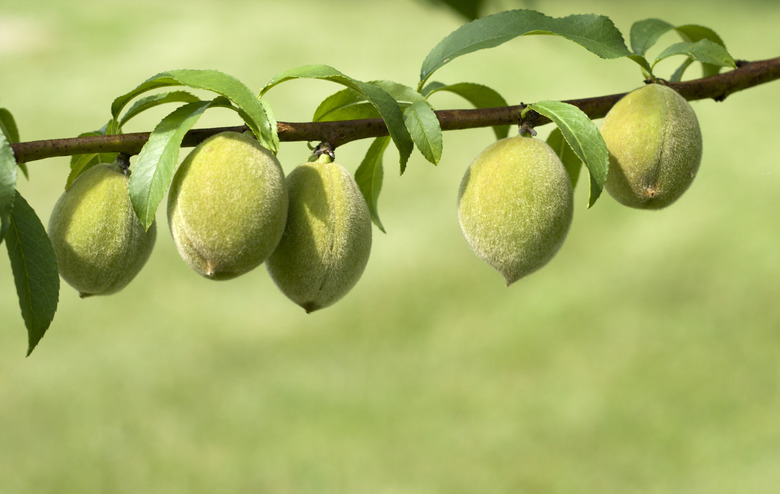My Peaches Will Not Get Bigger Or Ripen
Few homegrown treats can compare to a plump, perfectly ripe peach from your own tree. But a bountiful and well-ripened harvest doesn't come automatically. Peaches may not grow as large or ripen as quickly as expected for a few reasons. Proper fruit thinning techniques and attention to growth conditions can help pinpoint the specific source of your peach tree problems.
Growing Requirements
Growing Requirements
Plant peach trees (Prunus persica, USDA zones 5-9) on fertile soil in a location that will protect the flower buds from frost damage in the spring. Avoid growing peaches in areas where temperatures drop below minus 10 degrees Fahrenheit or frost shows up after mid-April. Remove weeds regularly from a growing peach tree so your tree gets as many vital nutrients and moisture from the soil as possible. Peach trees need soil with plenty of drainage and airflow and a pH between 6.0 and 7.0.
Thinning Young Peaches
Thinning Young Peaches
Thinning is an essential step in growing healthy, vigorous peach trees that can sustain their load of fruit. The process will multiply the size and quality of fruit. Remove excess fruit early in the season, when they are dime-sized. Leave behind peaches that are spaced about 8 inches apart on the limbs. Thinning will not change the weight of your ultimate harvest, but it will help the tree grow significantly larger fruit. It solves the problem of overloaded peach branches, which often drop fruit before they are ripe.
Identifying Mature Peaches
Identifying Mature Peaches
Some peach cultivars take longer to ripen than others. Many are expected in early summer, but others don't ripen until August or September. Clingstone peach trees, which tend to be early ripeners, often produce smaller fruit than freestone varieties. Keep in mind that some parts of the tree will ripen sooner than others, with the inside branches ripening five to 10 days after the outside parts.
You can judge a peach's ripeness by its round shape and slight softness. In traditional peaches, ripening skin exposed to the sun turns red while the unexposed parts turn yellow. Some new all-red commercial varieties will go almost completely red at full ripeness.
Ripening peaches off the tree is also an option if you pick your fruit too soon. One easy way to do this is by putting the peaches in a brown paper bag at room temperature for a couple days. They become softer, sweeter and ready to enjoy.
Additional Factors
Additional Factors
Peaches thrive with plenty of sunlight, and they need enough of it to ripen fully and gain proper color. To encourage adequate exposure and boost the ripening process, orient orchards north to south. With more than 200 peach cultivars, some may respond better to certain environments than others. If the rootstock is not healthy or the peach cultivar does not perform well in your area, peach quality could be compromised. Another possible cause of poor quality fruit is the dying off of the scion, or upper part of a tree graft. If the rootstock takes over the scion, this may diminish both fruit quality and tree size.
A few small changes can result in big improvements in your peach harvest. Whether you have peaches turning brown, growing small or failing to ripen, you can improve your results by thinning your trees and giving them the care they need to get the nature peaches you're craving.
